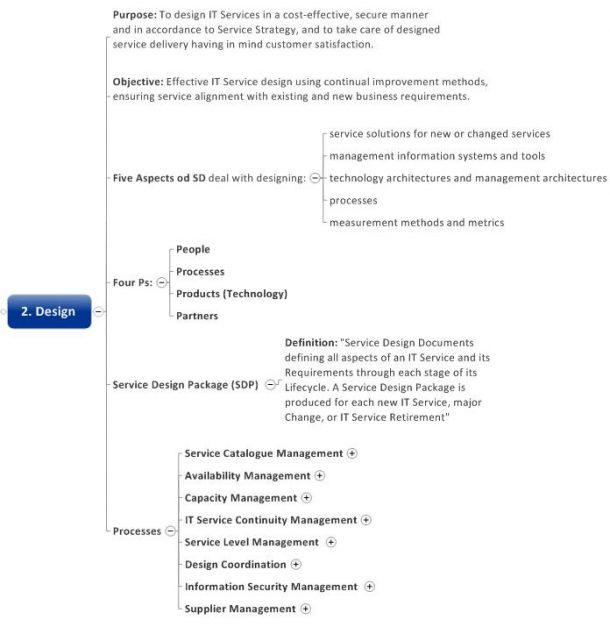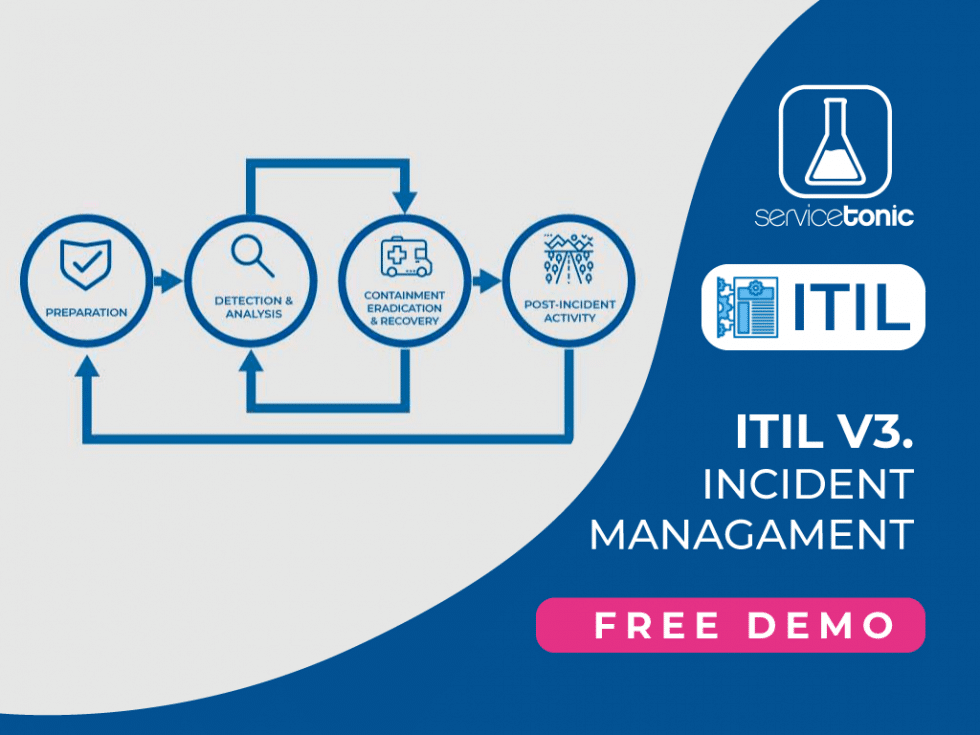Table of Contents
5 Essentials Tips in Service Design in line with ITIL® Best Practices
The main objective of this phase is to design services in order to introduce them in the production environment so that they generate the expected value.
The strategy, discussed in the previous article, decides what services should be provided and what results are expected from the service. It sets out the policies to be followed (technological, safety, organizational…) and restrictions to consider (budget…)
The service design activities begin when the strategy launches a new service or a significant change to an existing service. The strategy provides an overview of the functionality and the service level necessary to achieve the expected results. Service design will work with the business to identify the requirements in detail.
Service design should work with the following aspects: functionality (what the service has to do), service level (guarantee of proper operation), deadlines and resources (money, people and technology).
Essentially, both are business requirements and the designer has to take into account that they are interrelated and therefore, whenever a requirement change occurs, these aspects have to be reviewed.
Balanced Design
Service design should work with the following aspects: functionality (what the service has to do), service level (guarantee of proper operation), deadlines and resources (money, people and technology).
Essentially, both are business requirements and the designer has to take into account that they are interrelated and therefore, whenever a requirement change occurs, these aspects have to be reviewed.
Global approach
Service design must implement a comprehensive approach to ensure consistency and integration. On one hand, any change in any element of a service should be evaluated taking into account the other elements; on the other, we need to consider the impact of the service on the environment: other services, management tools, technology, service management processes and metrics.
The design also ensures that the service can be easily and efficiently implemented and deployed in the transition phase, executed in the operation phase and improved throughout its lifecycle.
The 4 P
The implementation of ITIL service management has much to do with the preparation and planning of the effective and efficient use of the 4 Ps:
- People
- Processes
- Products/technology
- Partners/suppliers
Many designs fail for lack of preparation and/or management.
Consider the 4Ps and how they work together will help us get a good result.
Service Design Package, SDP
A Service Design Package (SDP) should be produced in each design. The SDP is delivered to the transition phase and contains all the necessary details for the following phases of the lifecycle: transition, operation and continual improvement.
The SDP contains: requirements agreed with the business, the design itself (definition, components and infrastructure, tools, processes, procedures, metrics, reports, support services, agreements with suppliers…), organizational preparation (financial assessment, technical, resources… and the detail of all the skills and competencies required for the service provider) and the service lifecycle plan (service program, service transition plan, acceptance of the Service operation plan and acceptance criteria service).

Processes
Design Coordination
Coordinates all design activities and manages the schedule, resources and potential conflicts. It sets out the policies and working standards. The ultimate goal is to ensure that the designs are done in an efficient manner and that the design goals are met.
Gestión del Catálogo de Servicios
The Service Catalog is the repository to place information associated with all the services that are currently providing. The aim of the process is to ensure the Service Catalog is properly maintained, updated and accessible.
Service Level Management
Negocia, acuerda, documenta y realiza el mantenimiento de los objetivos de calidad del Servicio. Monitoriza y reporta los niveles de cumplimiento alcanzados durante la ejecución del servicio.
Capacity Management
Negotiates, agrees, documents and maintains the quality of service objectives. Monitors and reports on compliance levels achieved during service execution
Availability Management
Responsible for monitoring and optimizing services to provide the level of availability agreed with the customer at the lowest possible cost and risk.
Continuity Management
Responsible for preventing that a sudden and severe disruption of services due to natural disasters or other major force, had catastrophic consequences for the business. To do that, this process develops contingency plans for different magnitude disasters.
Provider Management
Negotiates and agrees contracts with suppliers, establishing UC (Underpinning Contract).
Information Security Management
Responsible for developing and maintaining the Information Security Policy (ISP), where integrity, confidentiality and availability of information policies are established.

“El diseño nos dice cómo hemos de llevar el servicio desde la teoría de la estrategia hasta la práctica de la operación.” – Manuel Molero, CTO ServiceTonic



